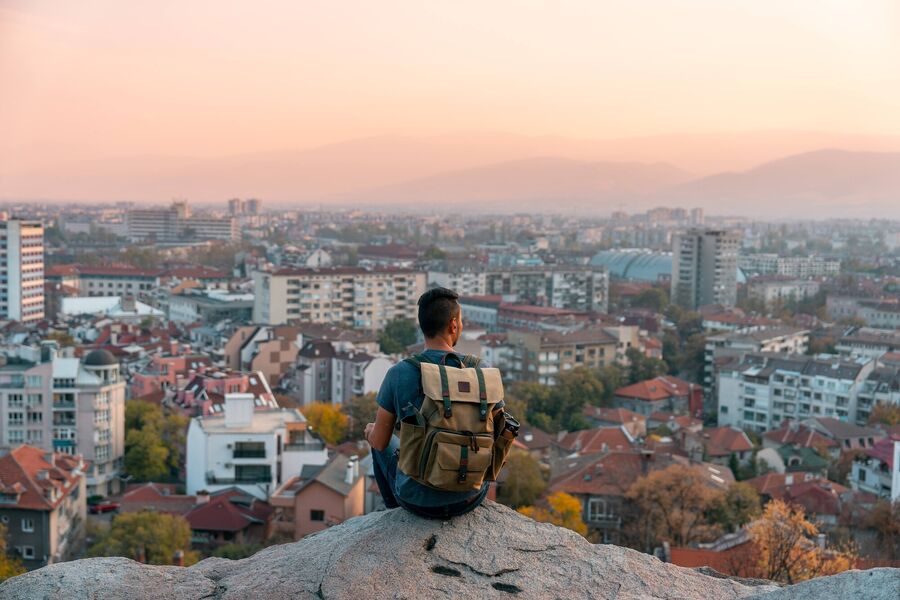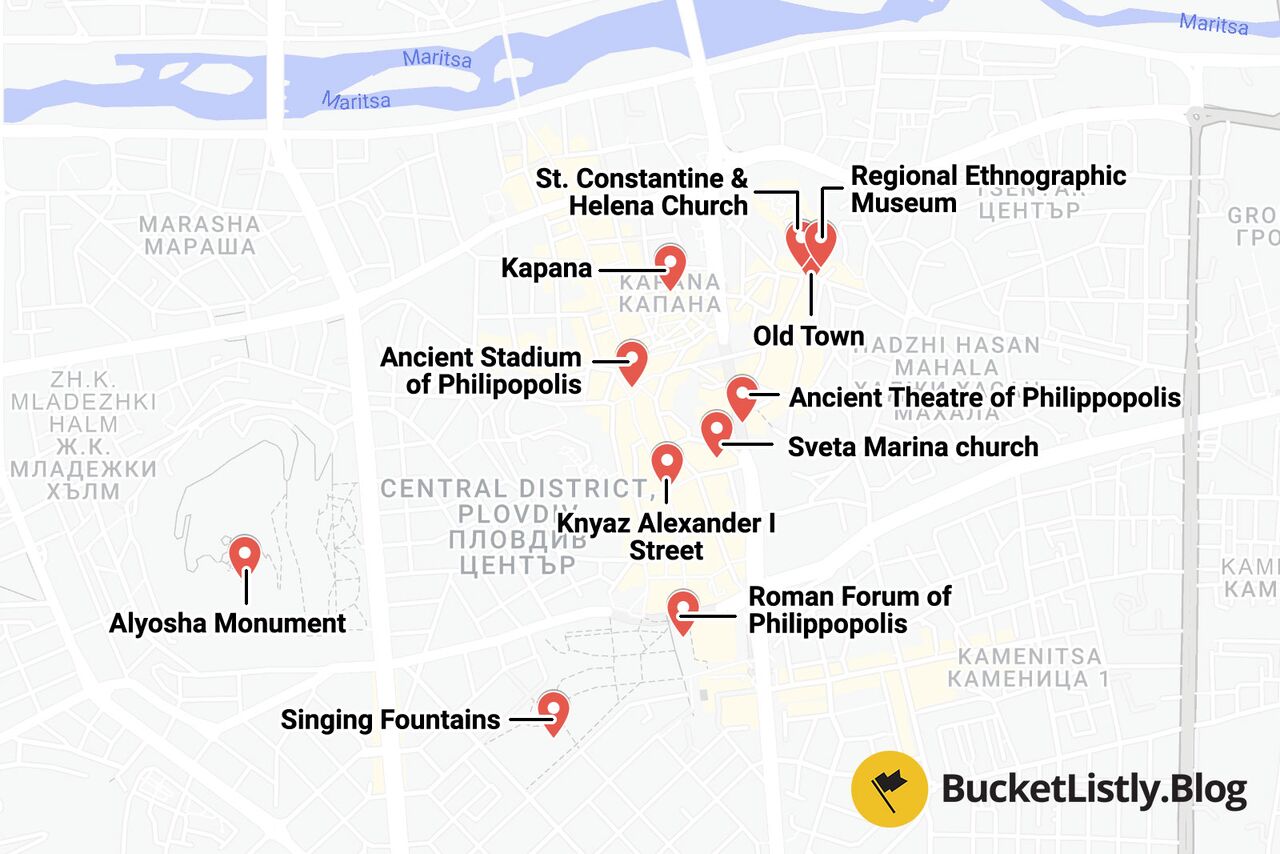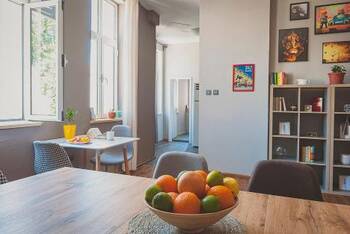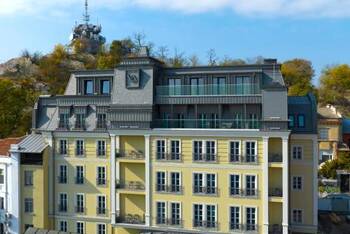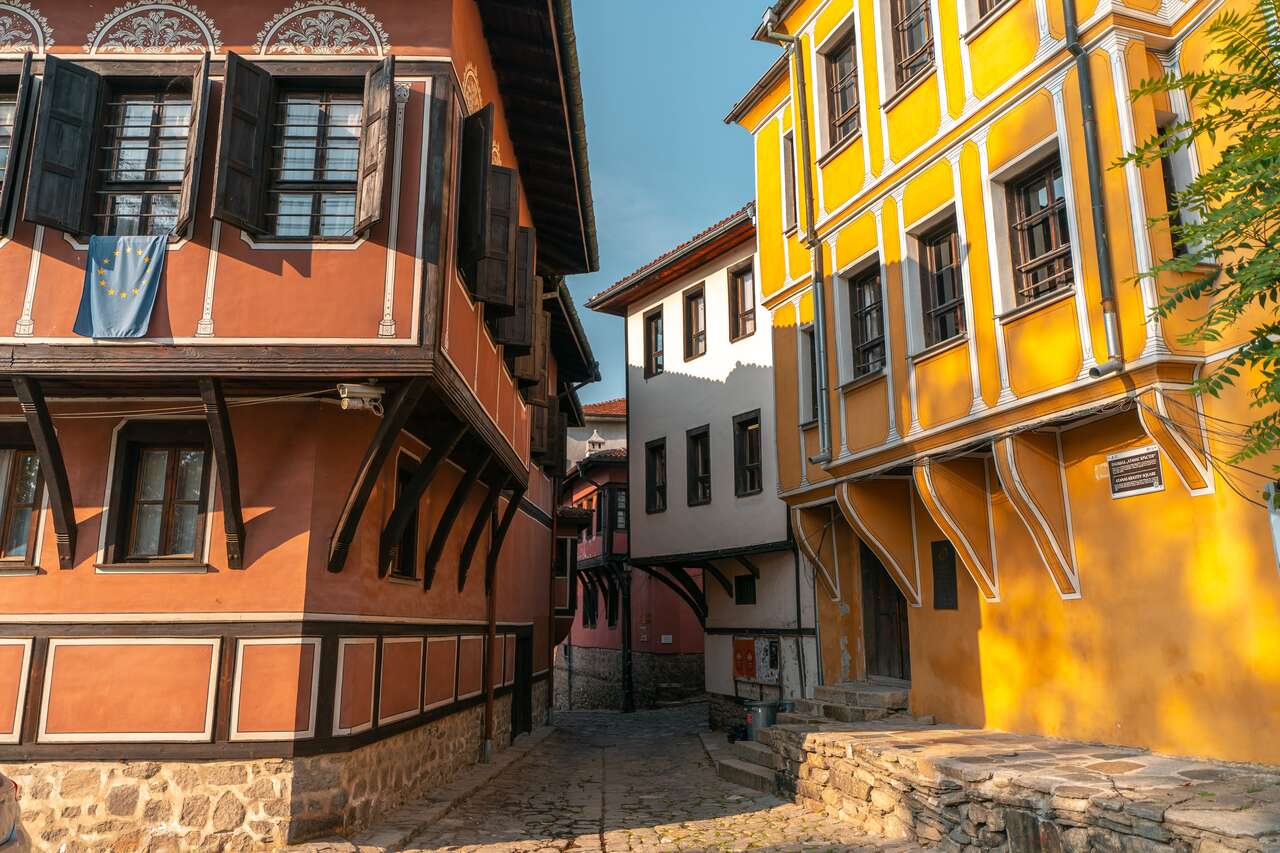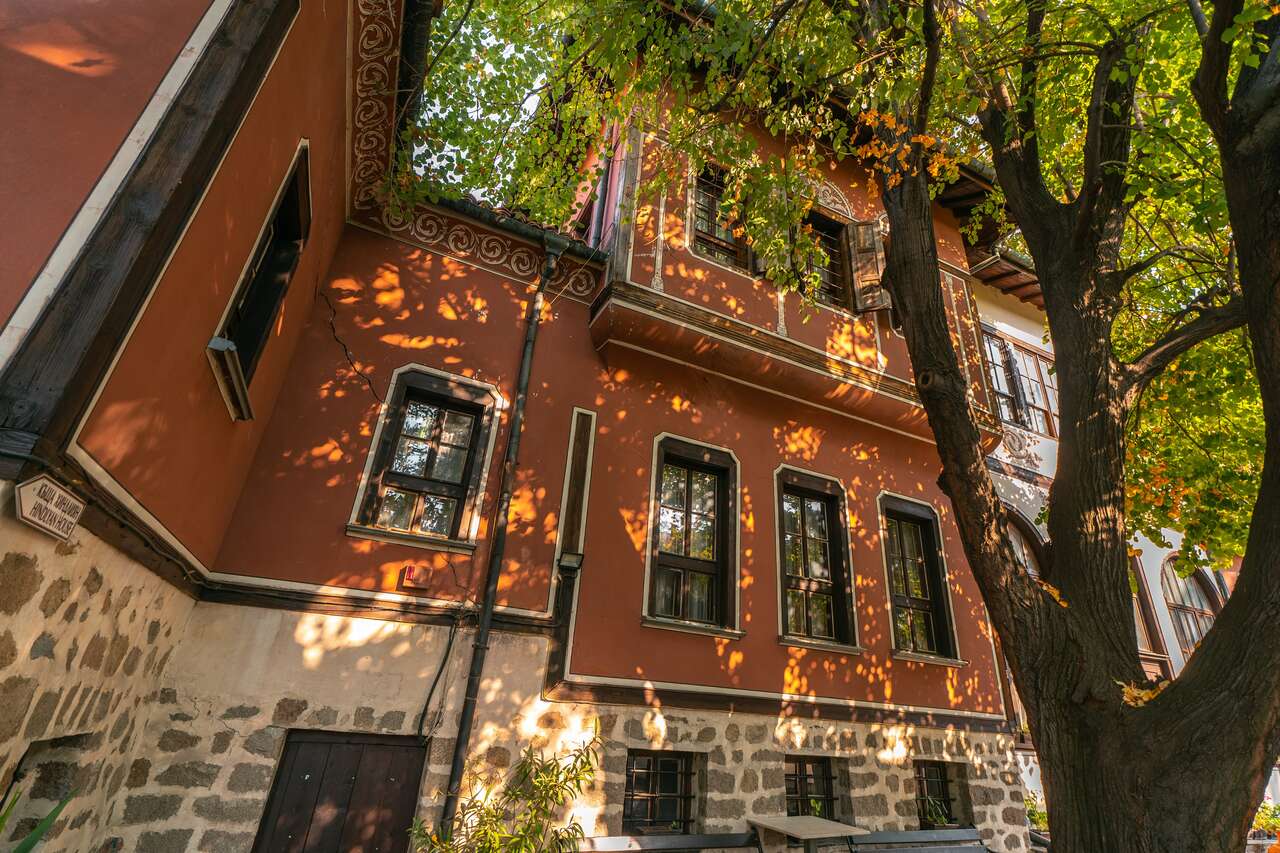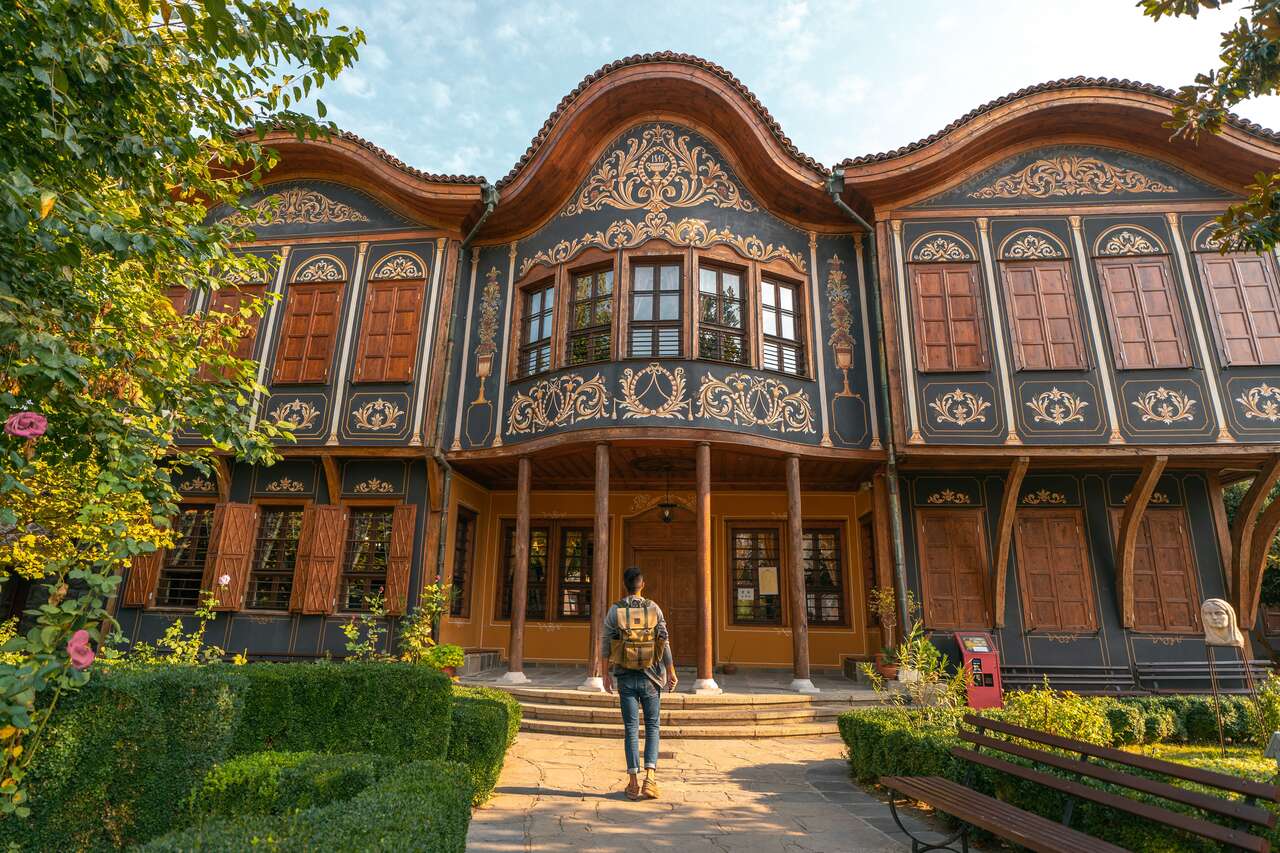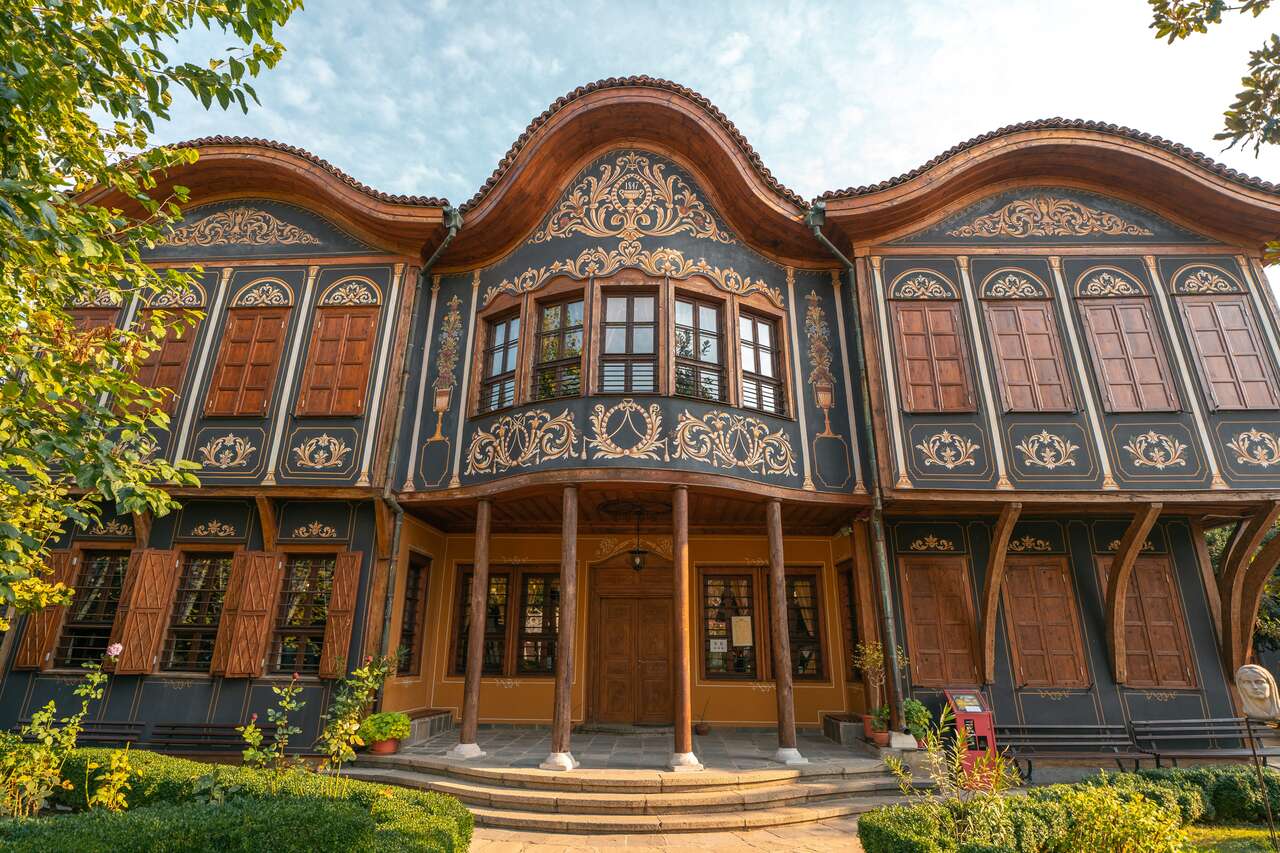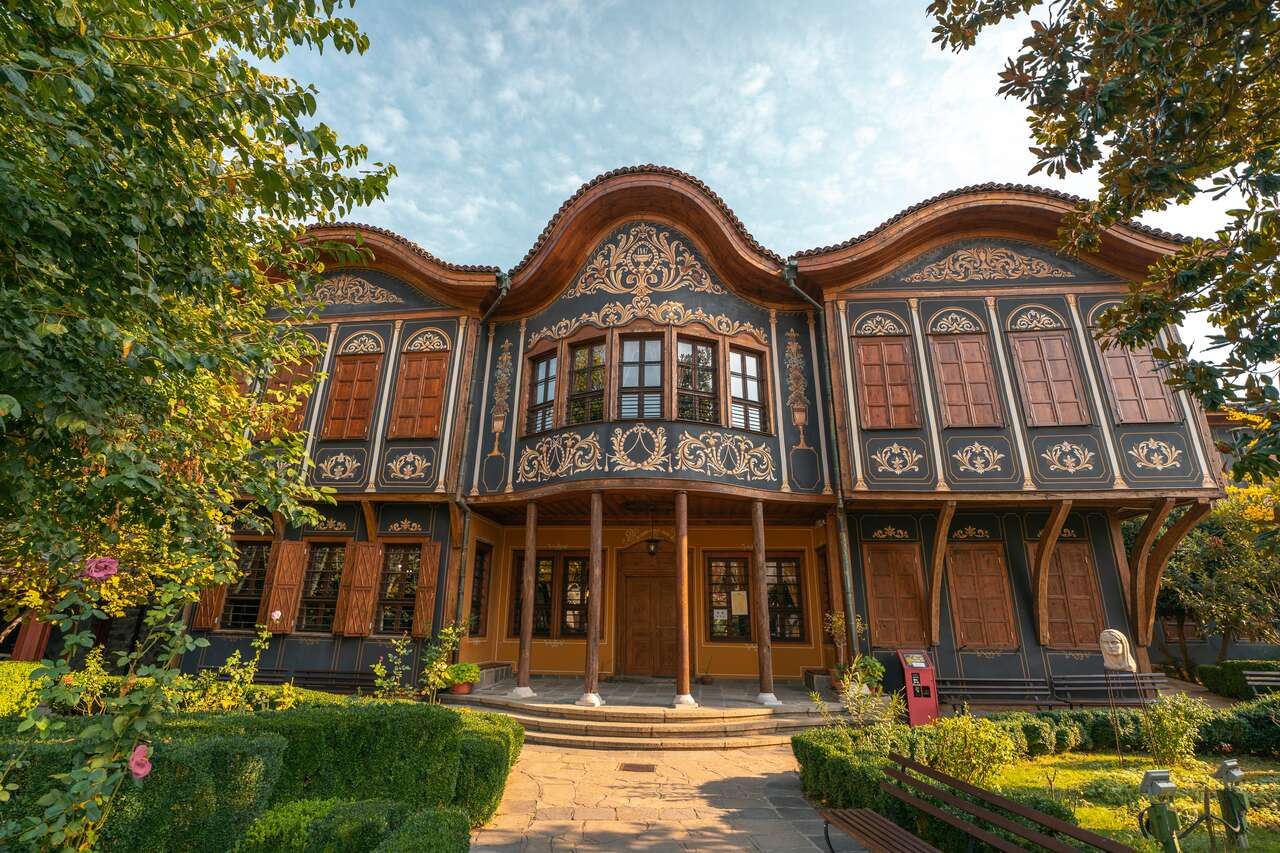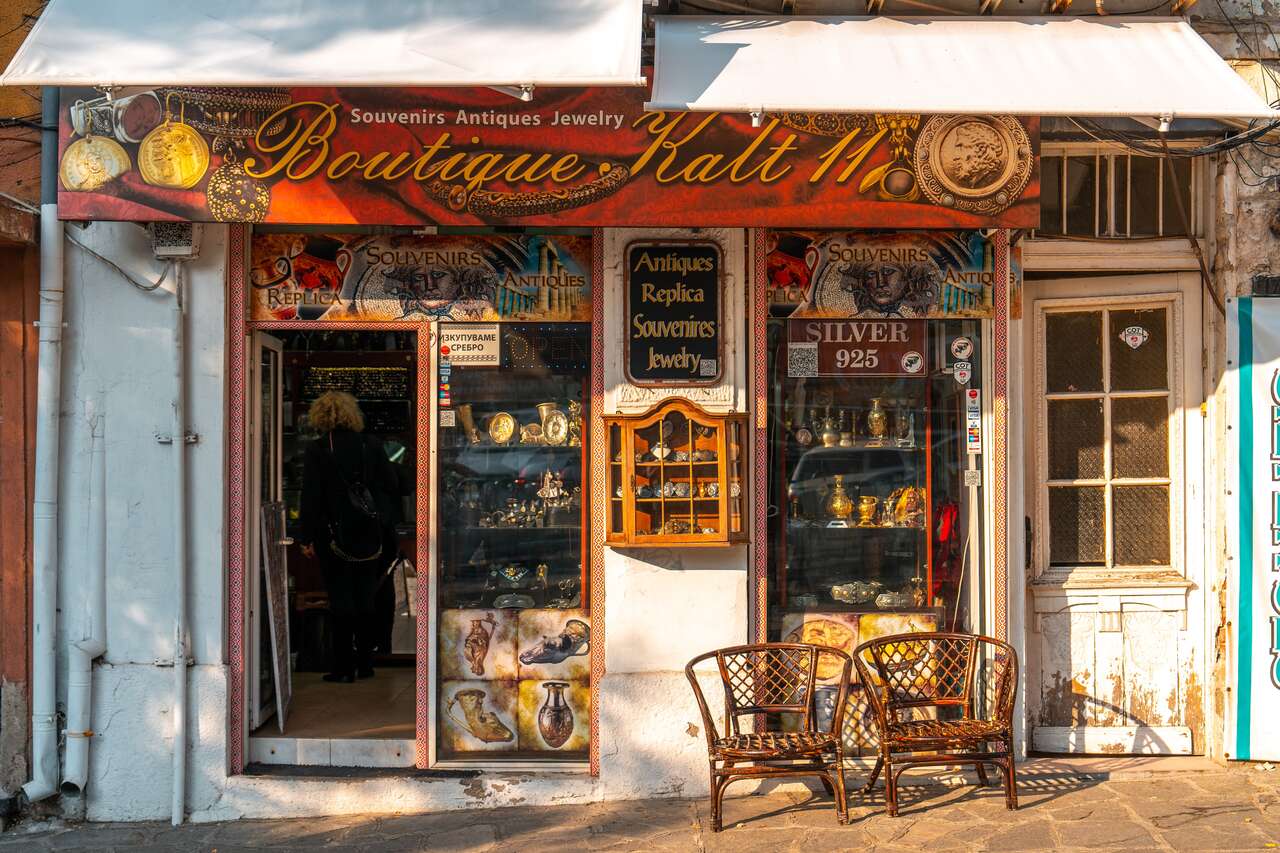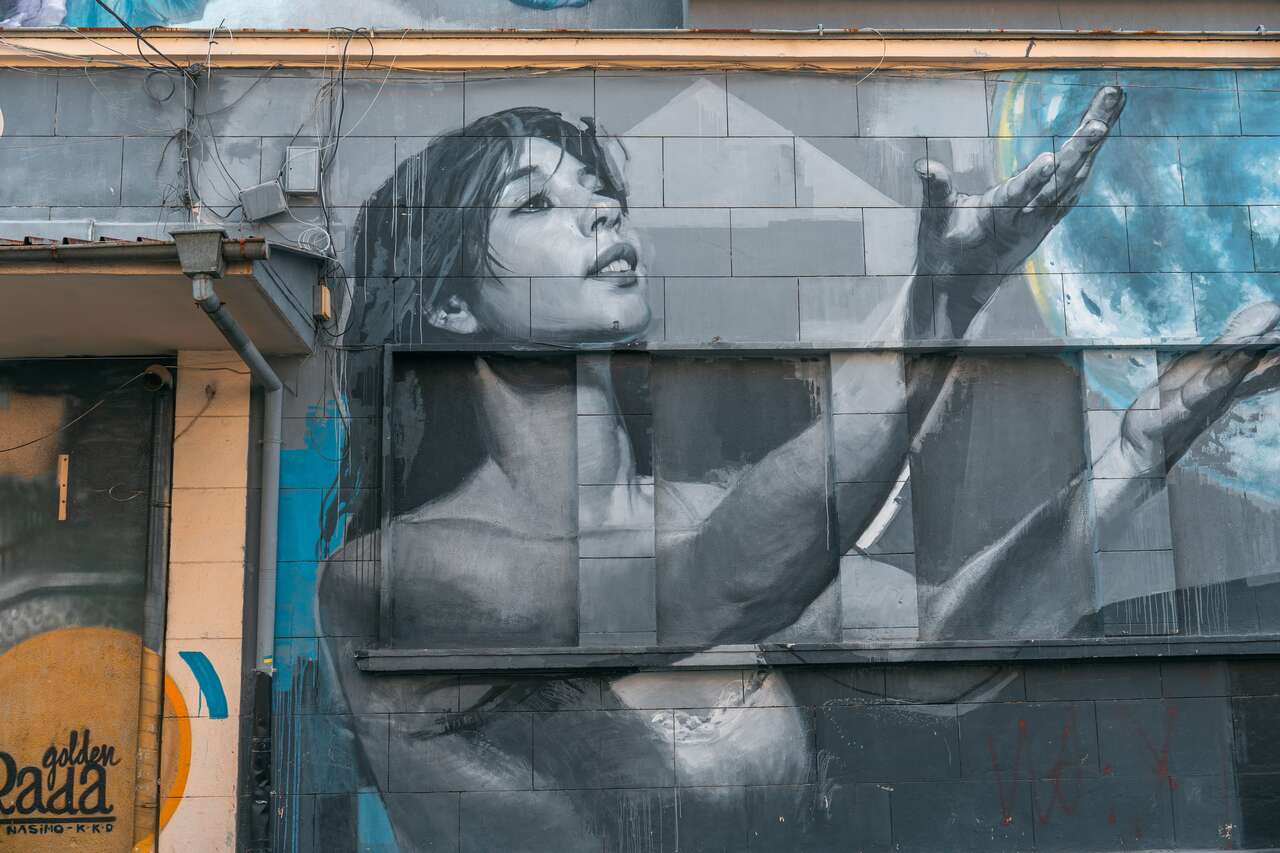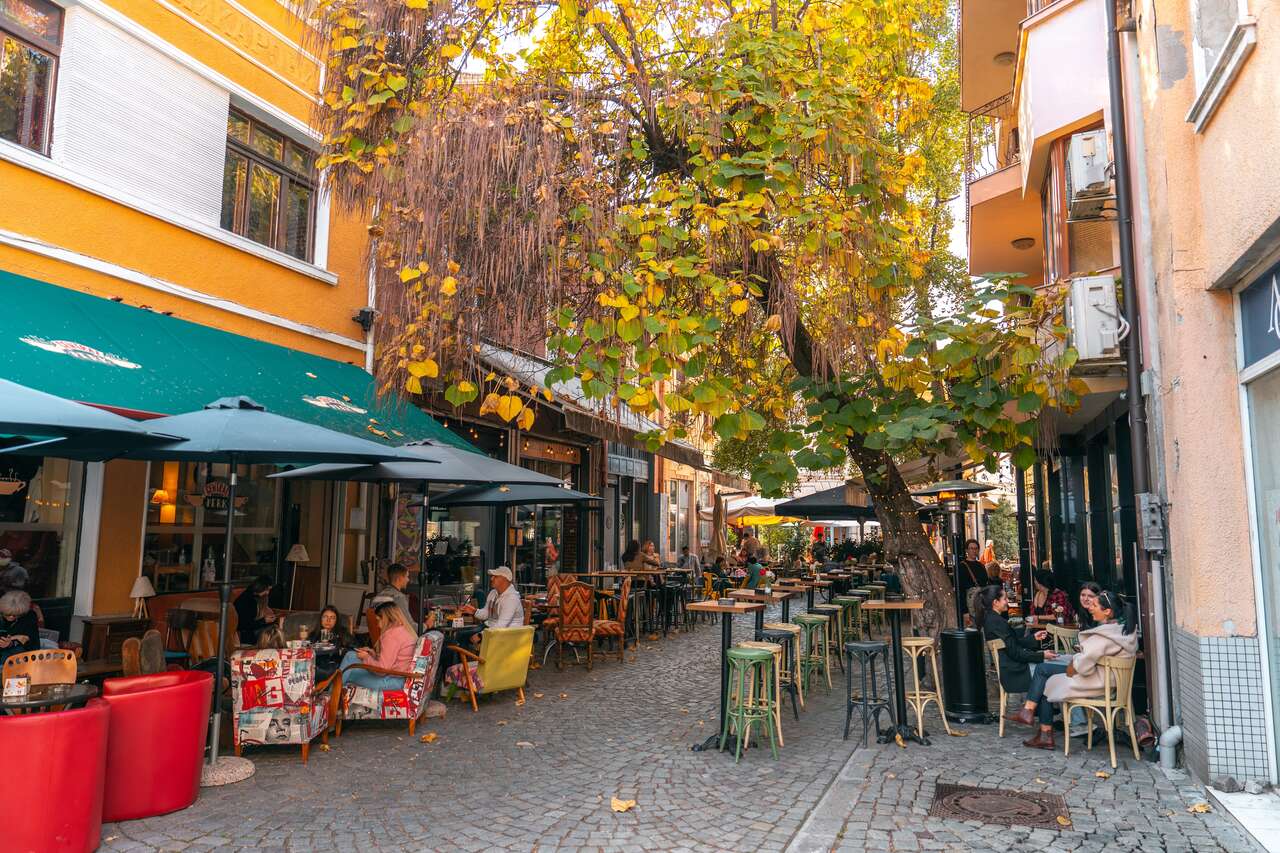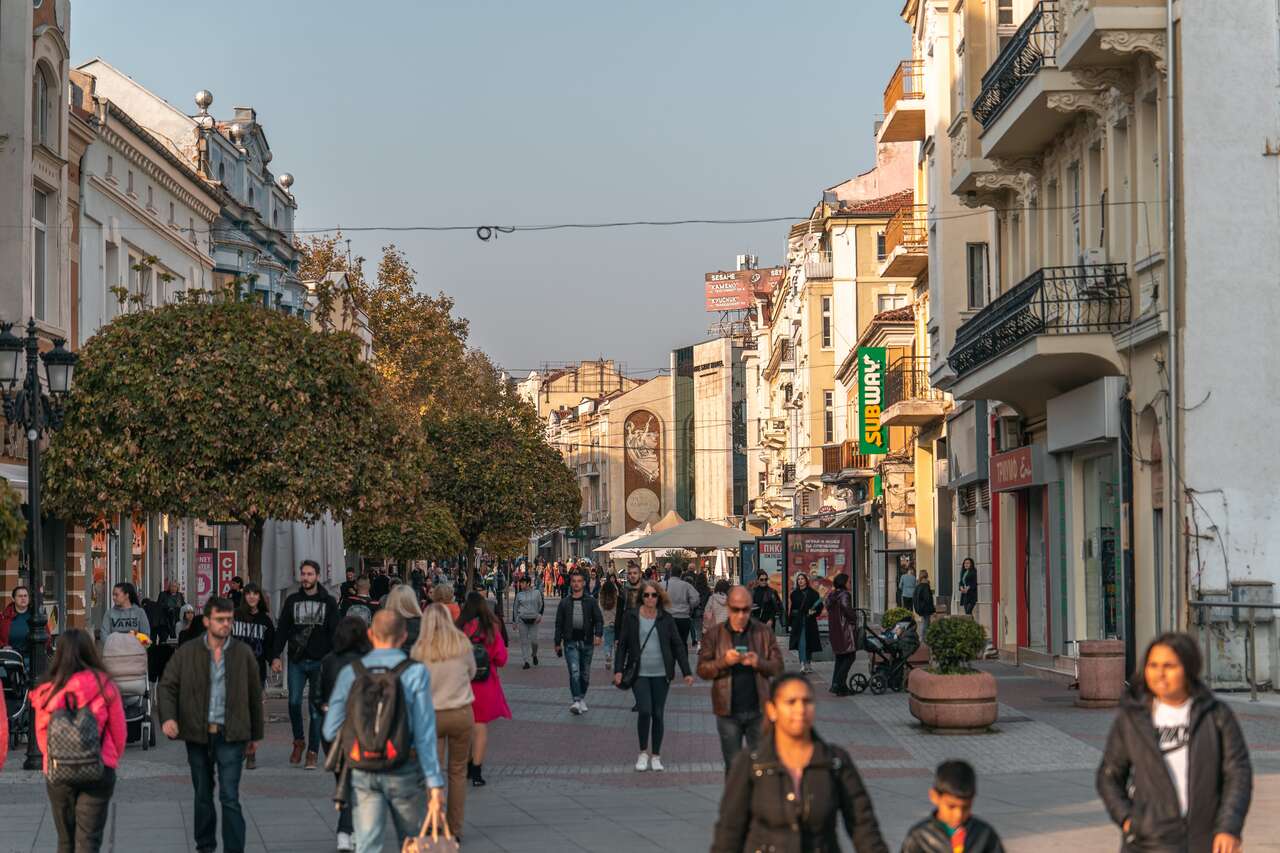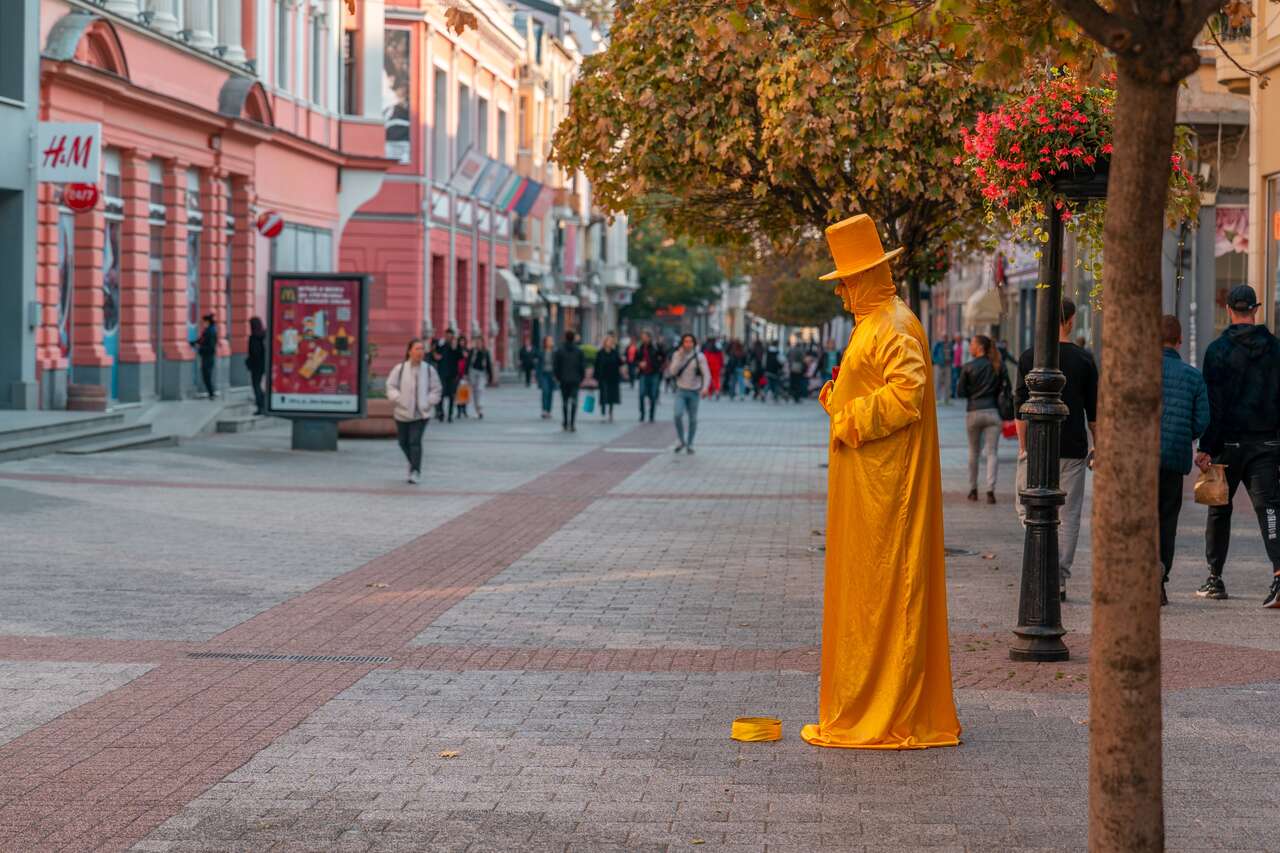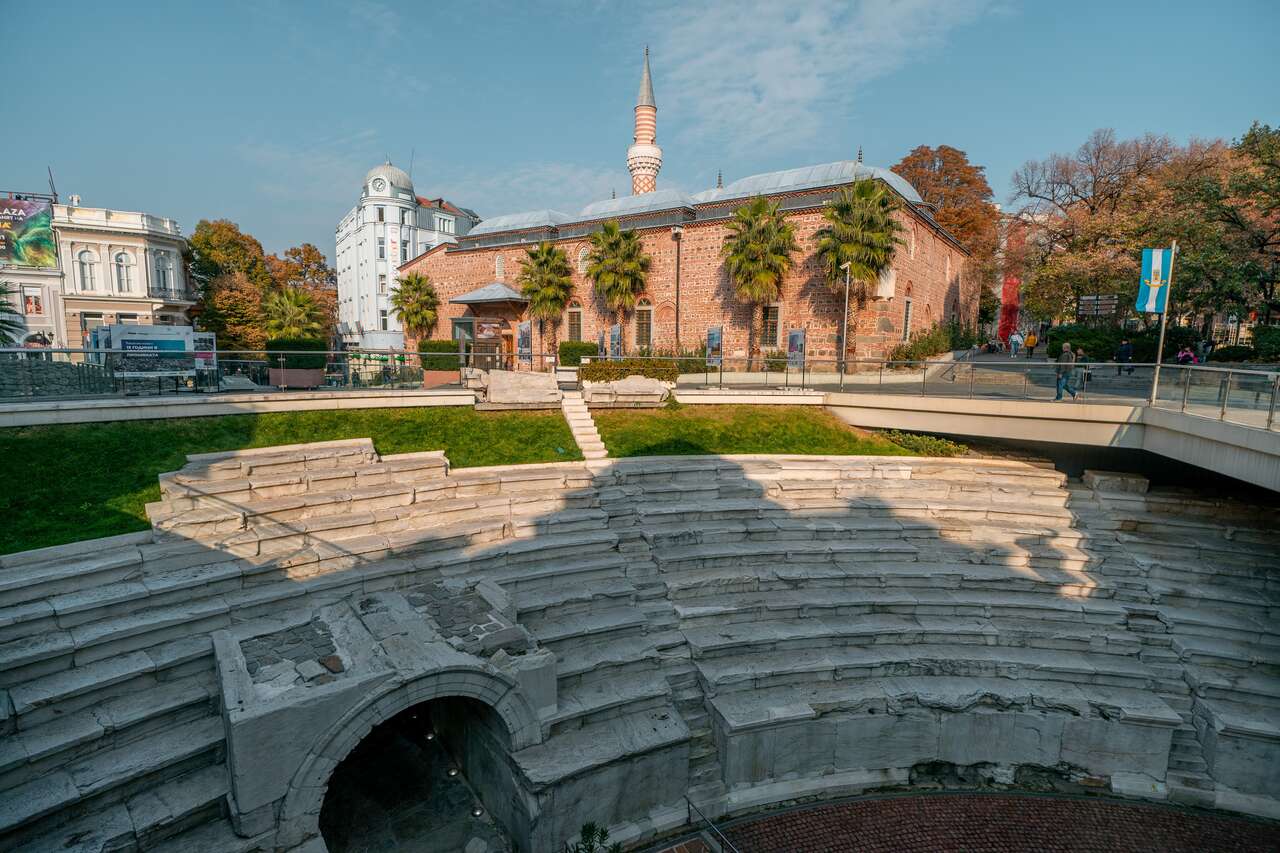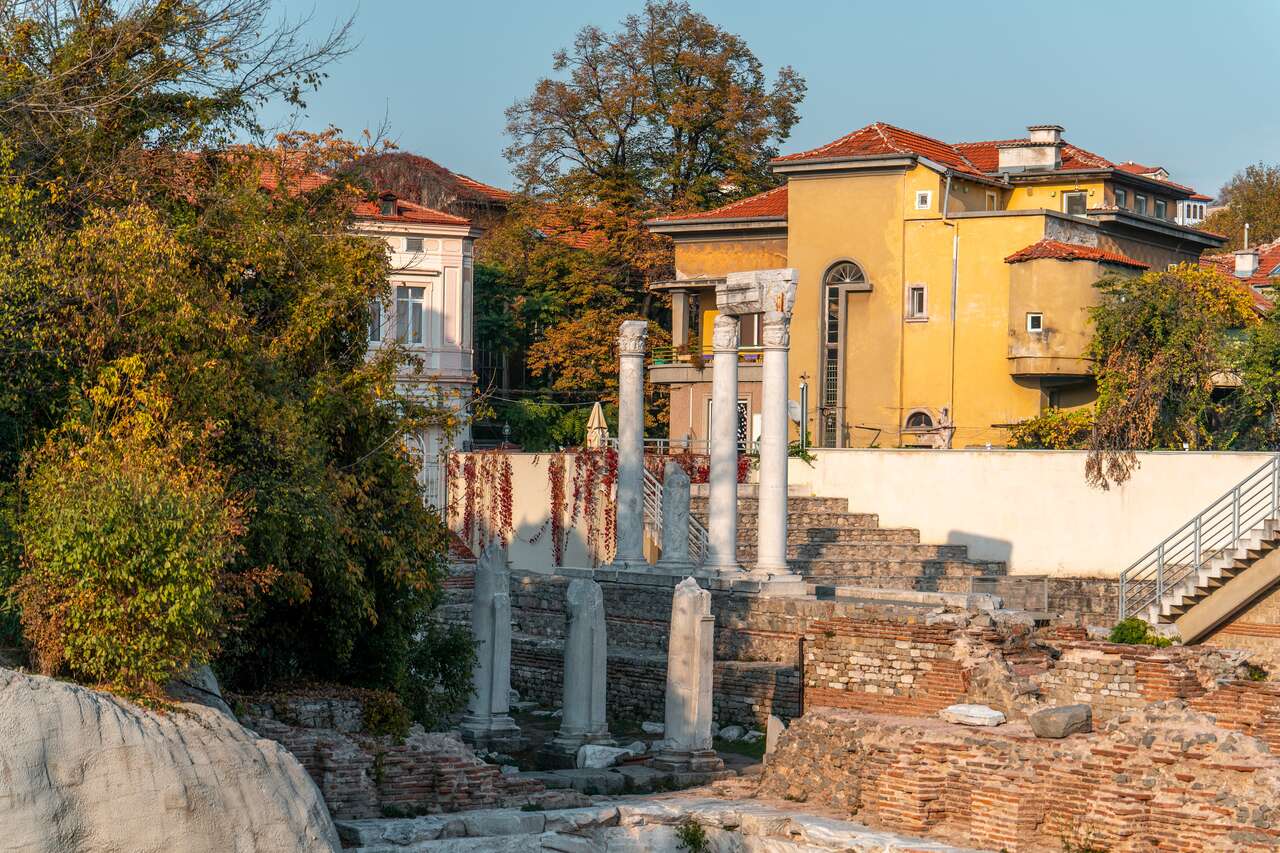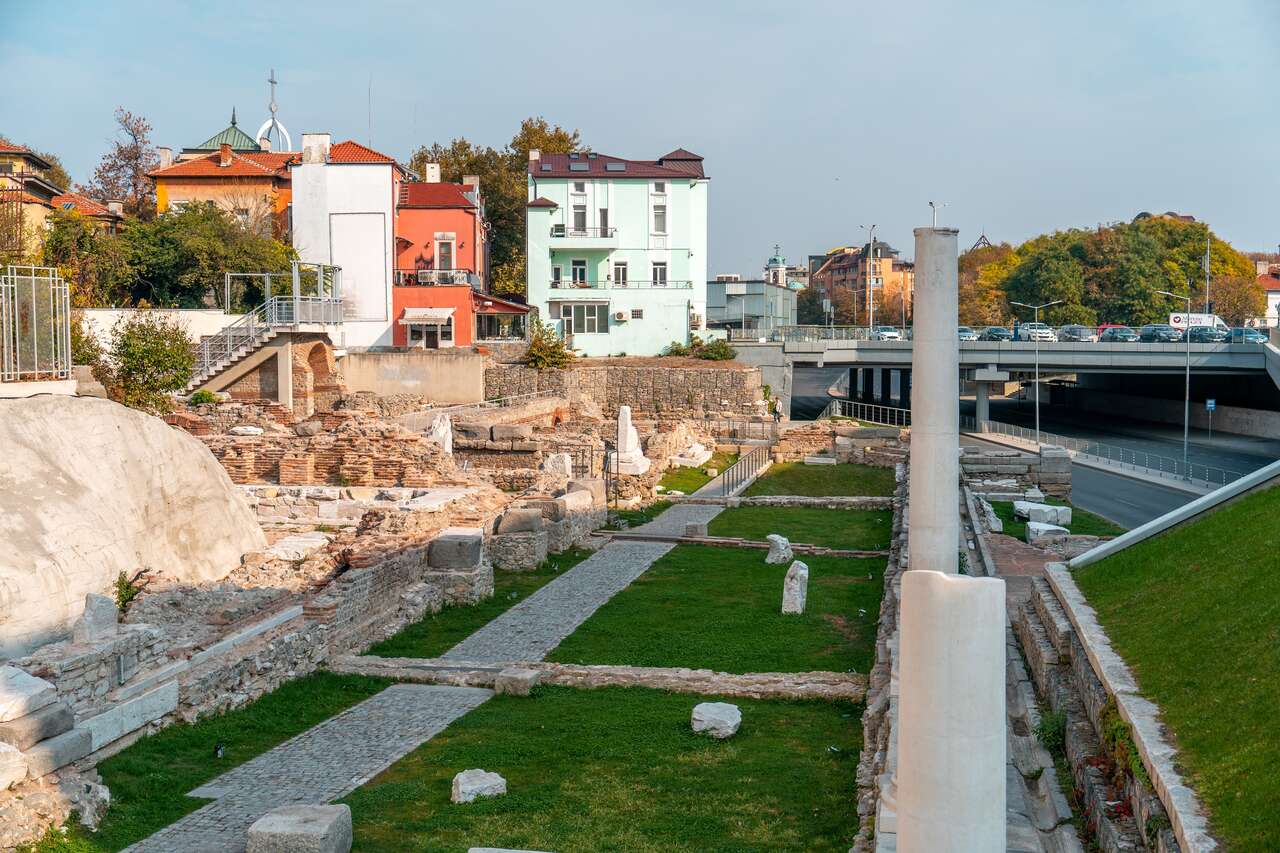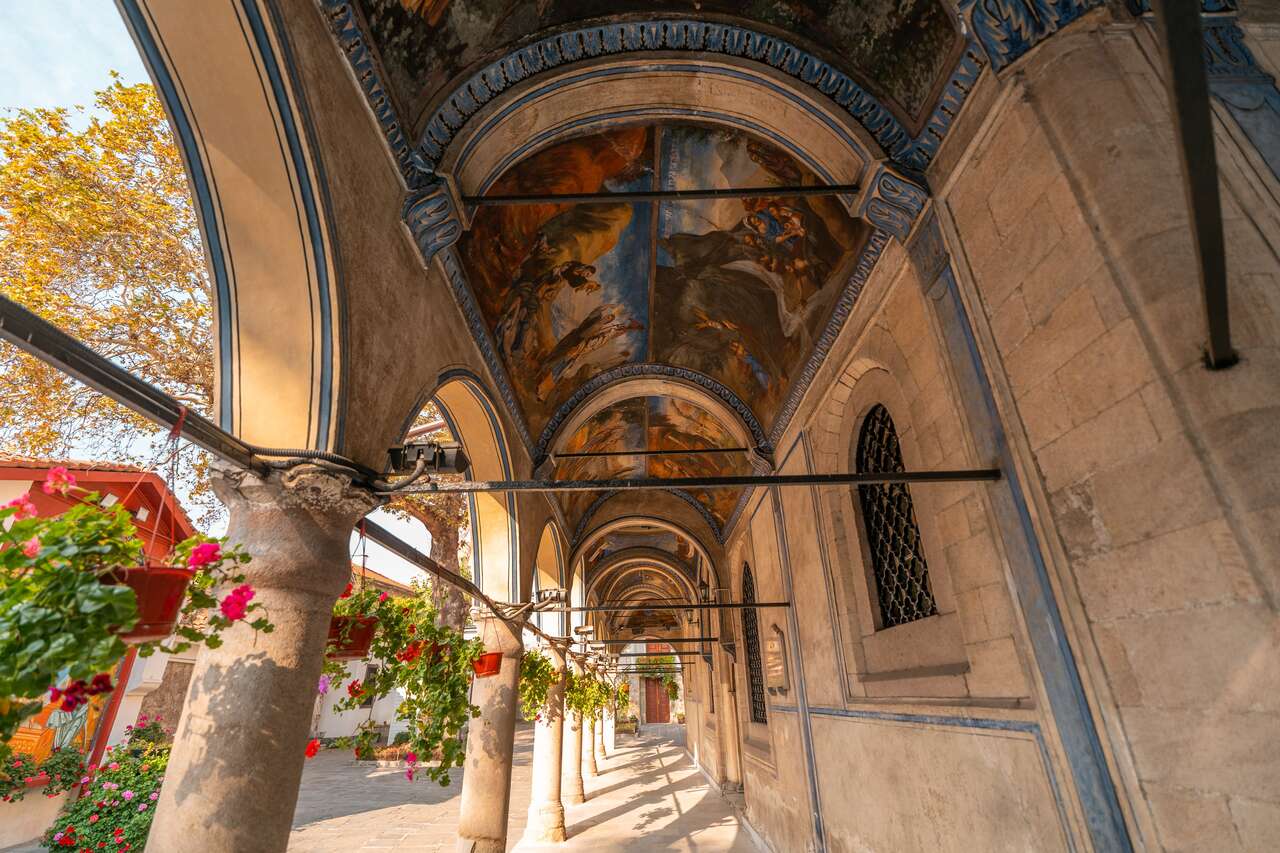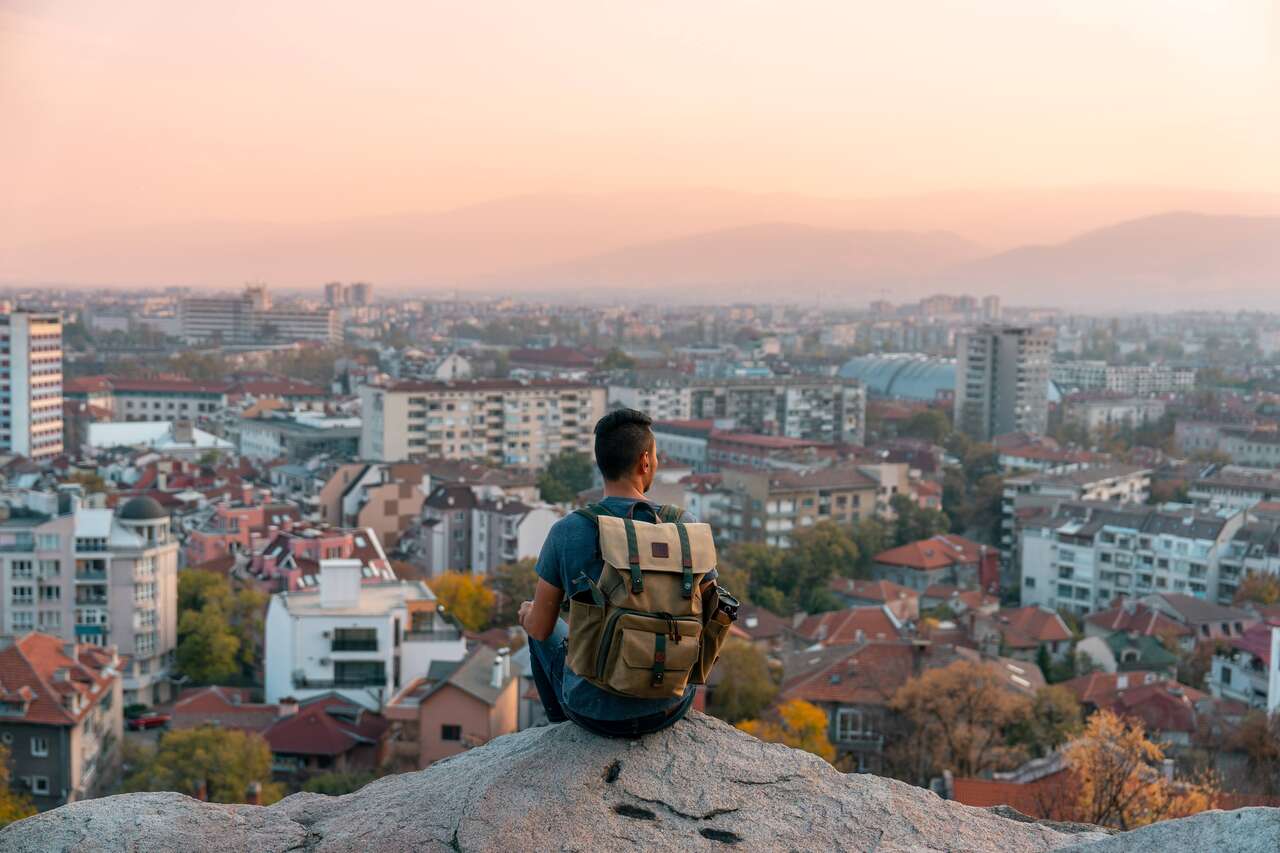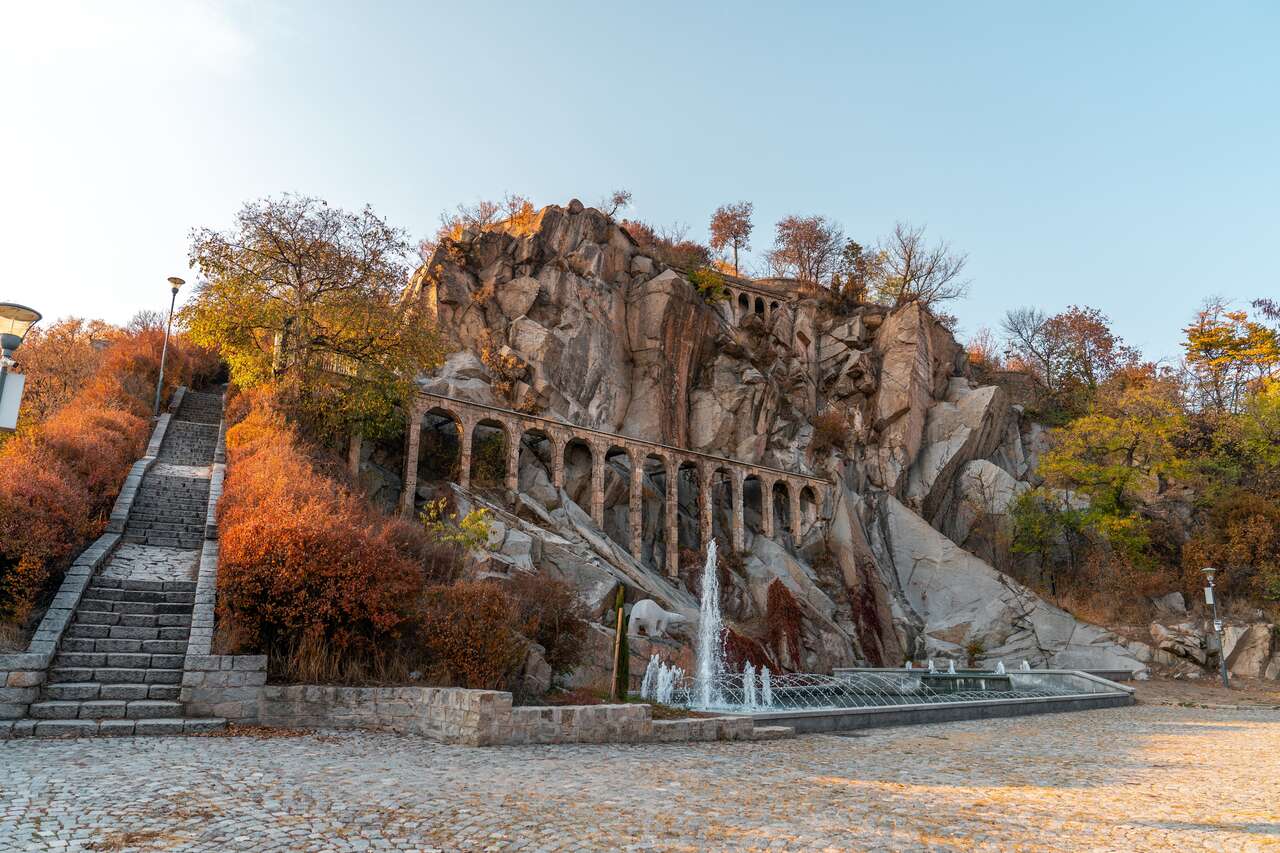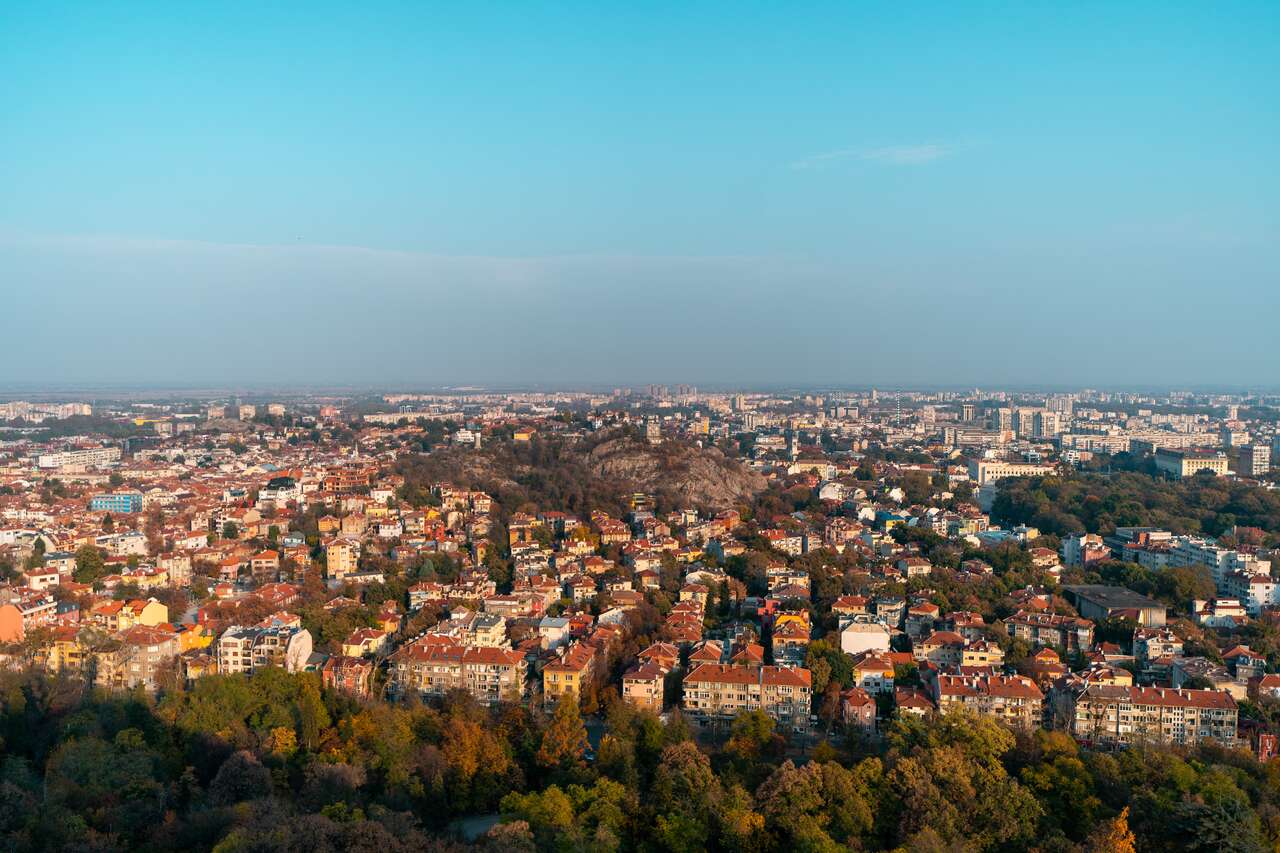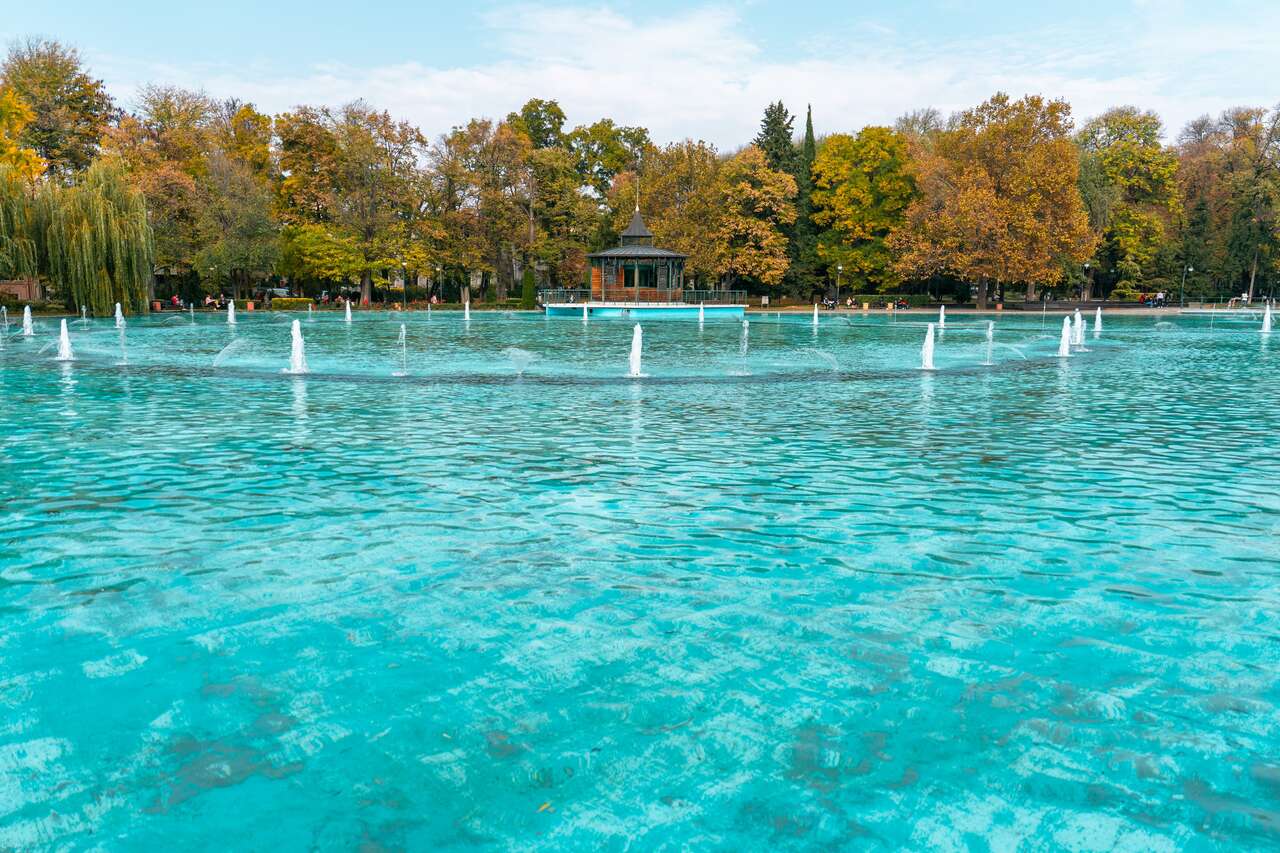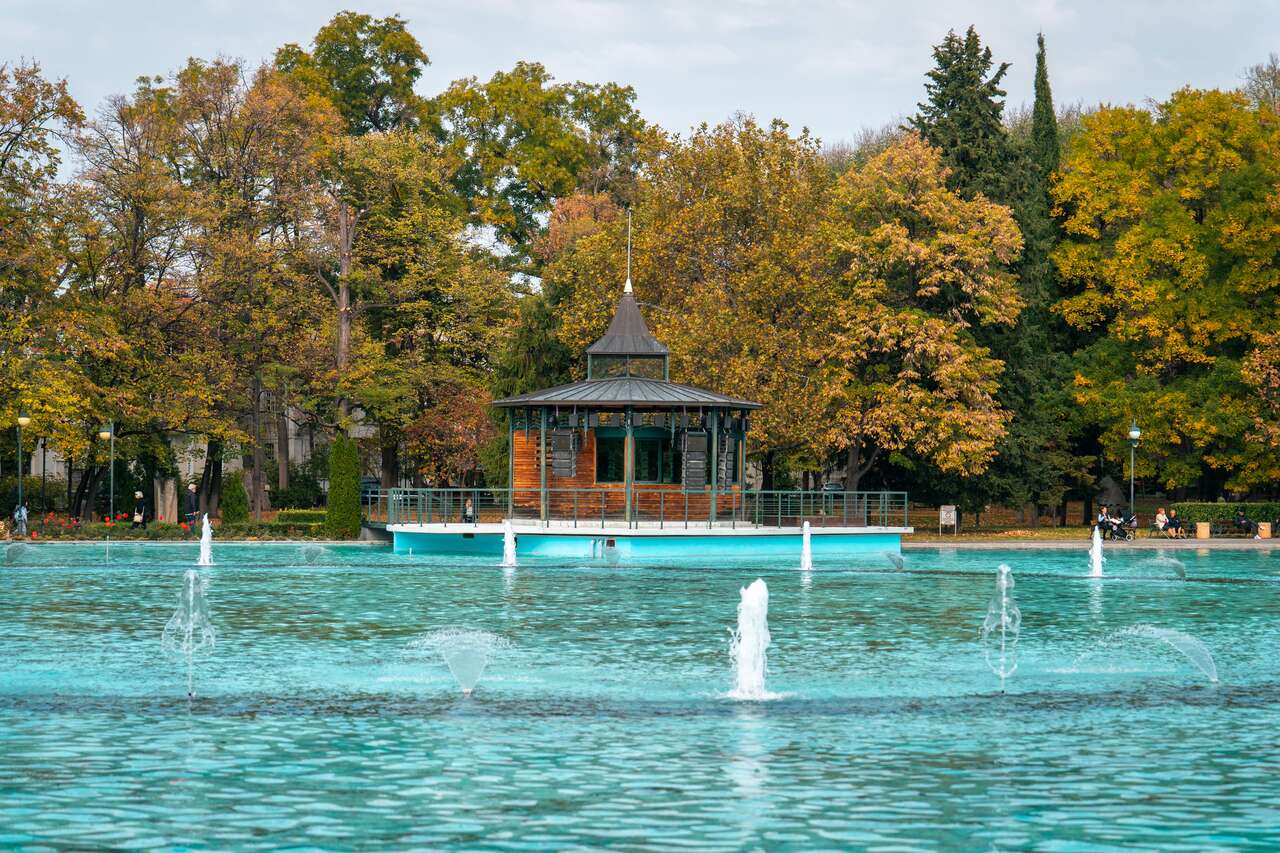Plovdiv, an ancient city spanning millennia, even before the time of the Romans, is home to some of the most well-preserved ancient ruins, an old town that dated all the way back to the 4th Century, and a thriving artistic and creative scene with street art and specialty shops all over Kapana, so much so that the city was rewarded the prestigious title of European Capital of Culture, becoming the first Bulgarian city to receive this honor.
It is one of the most interesting cities you can visit here and within this guide, you will find all the information you need to help plan the perfect trip to Plovdiv. From visiting the Ancient Theatre of Philippopolis, one of the oldest and largest theatres in the Balkans to exploring the creative and artistic scene of Kapana, here are the 11 best things to do in Plovdiv:
- Plovdiv Itinerary Map
- Where to Stay in Plovdiv?
-
11 Best Things to Do in Plovdiv
- Admire the Beauty of the Ancient Theatre of Philippopolis
- Explore the Old Town of Plovdiv
- Check Out the Regional Ethnographic Museum
- Visit St. Constantine & Helena Church
- Explore the Creative District of Kapana
- Stroll Along the Main Shopping Street
- Drop By the Ancient Stadium of Philipopolis
- Check Out the Roman Forum of Philippopolis
- Visit Sveta Marina Church
- Be Amazed at the View from Alyosha Monument
- Visit Singing Fountains at Night
- More Plovdiv Activities
- Further Reading for Bulgaria
Plovdiv Itinerary Map
| ❤️ Must Visit: | Ancient Theatre of Philippopolis |
| 🥘 Place to Eat: | Restaurants in Kapana |
| 🏛️ Best Museum: | Regional Ethnographic Museum |
| ☀️ Great Day Trip: | Sofia |
11 Best Things to Do in Plovdiv
1. Admire the Beauty of the Ancient Theatre of Philippopolis
One of the most popular tourist attractions you should check out first is the Ancient Theatre of Philippopolis, a well-preserved ancient amphitheater located in the heart of Plovdiv's Old Town, built in the 1st century AD during the Roman Empire's rule of the city, and it is believed to have been one of the largest and most magnificent theaters in the Balkans.
The theater was designed to accommodate up to 7,000 spectators and was used for various performances, including plays, concerts, and gladiatorial games. The structure of the theater is impressive, with a semicircular orchestra pit, a stage building with three entrances, and a high stage wall adorned with marble columns and statues.
- Temple House (Budget)
- Plovdiv City Center Hotel (Mid-Range)
- VIZUALIZA Residence Hotel (High-End)
- From Sofia: Plovdiv, Asen's Fortress and Bachkovo Monastery (9 hours)
- From Sofia: Day Trip to Plovdiv by Van with Guide Options (8 hours)
- From Sofia: Rila Monastery and Plovdiv Town Full-Day Trip (13 hours)
In the 4th century AD, the theater was renovated and expanded by the Byzantines, who added a second tier of seats and a new stage building. The theater was used until the 5th century AD when it was destroyed by a powerful earthquake. Despite that, the theatre remains, standing the test of time for centuries, so much so that it is considered to be one of the most well-preserved Roman theatres in the world.
No time to read?
Don't worry. You can save this page to Pinterest and come back later.
You can appreciate Roman's craftsmanship from outside the gate or you can pay the entrance fee of around 5 BGN or 2.5 EUR per person to get access to the seating and the stage area. The theatre is open from 9:30 AM to 6 PM every day. Definitely one of the best things to do in Plovdiv.
Where to Stay in Plovdiv?
2. Explore the Old Town of Plovdiv
Plovdiv's Old Town is one of the most well-preserved and picturesque old towns in Europe, with a rich history that dates back more than 2,000 years. The town is located on three hills overlooking Plovdiv's new town, all connected by narrow cobblestone streets you can explore.
The Old Town of Plovdiv is believed to be one of the oldest continuously inhabited cities in the world, with evidence of settlement dating back to the 6th millennium BC. The city has been ruled by Thracians, Greeks, Romans, Byzantines, Bulgarians, and Ottomans, and each culture has left its mark on the city's architecture, art, and culture.
One of the things I love most about Plovdiv's Old Town is all the beautiful well-preserved traditional Bulgarian houses as well as the numerous historical and cultural landmarks like medieval walls, churches, and mosques, you can find here. If you are interested in seeing what life was like living in these Bulgarian houses back in its heyday, there are several museums you can check out while you are exploring the Old Town.
Balabanov's House is one of these traditional houses turned museums where you can check out its beautiful 19th Century Bulgarian Revival architecture and stroll around the museum inside, showcasing the lifestyle and traditions of the Bulgarian upper class during the Revival period. Be sure to check out the underground wine cellar while you are there.
House-Museum Hindliyan is also another awesome museum to visit. The museum is housed in this beautiful blue-painted Bulgarian revival-style hous, with displays of artifacts, furniture, and beautifully decorated rooms, spread out across 2 floors.
The ticket fee for these places is 5 BGN each but you can buy a combined ticket for around 15 BGN and you will get access to 5 sites of your choosing in the Old Town. For more information about tickets, check out Plovdiv's official site.
3. Check Out the Regional Ethnographic Museum
While you explore Plovdiv's Old Town, you will also stumble upon the Regional Ethnographic Museum, one of the oldest museums in Bulgaria, housed in what I believe is the most beautiful and well-preserved traditional Bulgarian house in the Old Town.
The house was built in the 19th Century by a wealthy merchant with its grandeur exterior made out of wood, featuring a large central entrance and several windows on the upper floors. The building's facade is the highlight of it all with stunning decorative elements such as pilasters, cornices, and arches, and is painted in a striking combination of white and yellow. It is quite a sight to behold.
The museum showcases the lifestyle, customs, and traditions of the people of Plovdiv and the surrounding region. The museum's exhibits are divided into several sections, including traditional Bulgarian costumes, jewelry, and textiles; pottery and ceramics; woodcarving; and traditional musical instruments, totaling more than 20,000 items from different regions of the country. If you are interested to learn more about the history of Plovdiv, be sure to check out the Regional Ethnographic Museum. The museum is open from 9 AM to 6 PM every day except on Mondays and the entrance fee is 6 BGN.
Tours & Tickets You Might Like
Looking to save some costs on your travel? Why not join a shared group tour from Plovdiv? Here are some activities you might be interested in:
4. Visit St. Constantine & Helena Church
Before finishing up our exploration of Plovdiv's Old Town, make sure that you drop by and check out St. Constantine & Helena Church, a beautiful 19 Century church built on top of another church that was destroyed during the Ottoman rule of Bulgaria.
The exterior of the church is characterized by its simple and elegant design, with a white facade and a red-tiled roof. The church's striking bell tower that can be seen across the Old Town features a large bell that can be heard throughout the Old Town. Unfortunately, climbing up is not permitted at the time of writing.
That said, you can still go inside and check out the beautifully decorated interior adorned with incredibly detailed frescoes and intricate wood carvings. The church's nave is spacious and airy, with a high dome that is painted with scenes from the Bible.
One of the most impressive features of St. Constantine and Helena Church is its collection of icons, which date back to the 17th and 18th centuries. The icons depict scenes from the life of Jesus Christ and the Virgin Mary, as well as saints and other biblical figures. It is a nice quiet place to visit as you explore Plovdiv's Old Town so be sure to drop by here before we continue our exploration of Plovdiv.
5. Explore the Creative District of Kapana
After exploring the Old Town, it is time to explore the artistic and creative side of Plovdiv and there is no better place to experience it firsthand than at Kapana, a charming arts and cultural neighborhood of Plovdiv full of street arts, art galleries, and specialty shops.
The name Kapana translates to "The Trap" in English, and it is said that the district was named this because its narrow, winding streets were easy to get lost in. For me, it is probably more to do with the awesome creative and artistic scene as well as the number of cool cafes that will more likely trap me here forever 😂.
In Kapana, you will find plenty of impressive street art with incredible character design and creative color usage strapping across the side of buildings and walls all over the neighborhood, colorizing the street with vibrant colors.
And these are real artworks, not those random graffiti tags you often find in other parts of European cities. The street art here reflects the district's artistic spirit and cultural diversity, with a wide range of styles and themes you can find here, from abstract designs and colorful murals to political statements and social commentary. If you enjoy this kind of artwork, be sure to keep an eye out as you explore Kapana.
Kapana is also a popular destination for foodies, with a wide range of independent cafes, bistros, and restaurants serving up delicious cuisine including traditional Bulgarian dishes. It also has plenty of bars to keep your evening active and fun. It is one of the best places to hang out both during the day and at night and so if you are looking for something relaxing to do, be sure to get lost in Kapana. Definitely one of the best things to do in Plovdiv so do not miss it.
6. Stroll Along the Main Shopping Street (Knyaz Alexander I)
Plovdiv's Main Shopping Street (Knyaz Alexander I) is a picturesque pedestrian street located in the heart of Plovdiv's city center. The street is named after Alexander I of Battenberg, the first prince of Bulgaria, who ruled from 1879 to 1886, and it connects Plovdiv's Old Town with the rest of the tourist attractions in the city.
The street is lined with beautiful historic buildings, many of which have been beautifully restored, and now house galleries, cafes, and boutique shops. The buildings are a mix of architectural styles, with some dating back to the 18th and 19th centuries, and others reflecting more modern influences.
Notable tourist attractions you should check out along Knyaz Alexander I Street are the Statue of Milyo, a legendary character of the Plovdiv street culture and bohemian lifestyle that you can take photos with, Stefan Stambolov Square, with a beautiful fountain at the center surrounded by awesome restaurants, and several Roman ruins we will be discussing next.
It is one of the liveliest places in the city and if you just arrive in Plovdiv and are not sure where to begin, Knyaz Alexander I Street is a great place to start. Also, if you want to learn more about the history of Plovdiv and its stunning architecture, you can also go on a walking tour and get a deeper dive into Plovdiv's rich history and culture.
7. Drop By the Ancient Stadium of Philipopolis
While you approach Knyaz Alexander I Street from the Old Town, you will likely stumble upon the Ancient Stadium of Philipopolis, a well-preserved ancient structure located right at the center of the town square along Knyaz Alexander I Street. The stadium dates back to the 2nd century AD and was used for various sporting events and competitions, including athletics and gladiator fights.
The stadium was designed in the shape of a horseshoe and could accommodate up to 30,000 spectators. It measured approximately 240 meters in length and 50 meters in width, making it one of the largest structures of its kind in the ancient world.
Today, you can still see many of the original features of the stadium, including the seating area and the track itself embedded right on the concrete of the street surrounded by modern buildings that sprung up over the ancient stadium since it was first constructed 2000+ years ago.
You can walk to the glass fence and peek over it to see the beautiful stadium from above or you can enjoy a cup of coffee while looking over the stadium at a balcony of one of the cafes on the lower level of the street, so be sure to drop by here while you explore Plovdiv.
8. Check Out the Roman Forum of Philippopolis
Another awesome Roman ruin you can find on the opposite end of Knyaz Alexander I Street is the Roman Forum of Philippopolis, a collection of old ruins built in the 1st century AD during the reign of the Roman Empire and covering an area of 20 hectares (49 acres), with only 11 hectares (27 acres) of it being excavated, which makes it the largest Roman forum in Bulgaria.
The Forum consists of a large open square surrounded by a series of impressive public buildings, including the Odeon, the library, and the treasury building in a range of architectural styles, with some reflecting the traditional Roman style and others incorporating elements of Greek and Byzantine architecture.
You can still see many of the original features of the square, including the remains of the public buildings and the impressive colonnades that lined the square as well as other interesting archaeological artifacts, including mosaics, statues, and inscriptions.
These ruins vary in size and they are all scattered around Central Square so be sure to keep an eye out for these ancient ruins as you explore this part of Plovdiv.
9. Visit Sveta Marina Church
Just off Knyaz Alexander I Street, you will also find Sveta Marina Church, a beautiful and historic Orthodox Christian church known for its incredible wooden bell tower, stacking up almost like an Chinese Pagoda, as well as stunning murals and colorful frescoes across the walls and ceiling of the church.
The church was first built in the late 19th century, and its design is influenced by both Bulgarian and Byzantine architectural styles, and right off the bat, you will find the church adorned with intricate carvings on the outside and stunning murals, depicting scenes from the life of Saint Marina, as well as a rich collection of icons, liturgical objects, and other religious artifacts, inside.
The church is open from 7 AM to 8 PM every day and there is no entrance fee for visitors. It is one of the most sacred and highly revered churches in the city and so if you want to explore some of the best preserved religious artifacts in Plovdiv, be sure to check out Sveta Marina Church.
10. Be Amazed at the View from Alyosha Monument
Plovdiv is also known as the City of 7 Hills, and you can probably guess why that is. The city was built in between these 7 rolling hills and with so many hills around the city, it also provides the perfect opportunity for us to hike to the top of one of these hills for an incredible view over Plovdiv.
One of the best hills you can climb is Bunardzhika Hill where Alyosha Monument, a massive 1950s statue of a Soviet soldier, stands at the top towering over the entire city. The trail is also easily accessible with the trailhead easily reachable on foot straight from Central Square in the city center.
From the trailhead, it takes about 30 minutes to walk from Central Square and hike along its stone steps, zigzagging your way up to the top of the hill. Along the way, you will get a glimpse of what the view will be like at the top as the cityscape of Plovdiv reveals to you more and more as you ascend.
At the top, you will find the striking Brutalist-style Alyosha Monument built on top of a platform where you can walk around and appreciate the panoramic view of Plovdiv and see all the other 6 hills that make up the city. It is an incredible sight to see and definitely worth the sweat.
Thanks to its unobstructed vantage point, the monument is also a great place to watch the sunset and experience the golden hour as the sun casts shadows across the city and the sky color slowly shifted from gold to blue, so be sure to align your time accordingly.
11. Visit Singing Fountains at Night
Right after sunset, I highly recommend you go for a stroll around the beautiful Tsar Simeon Garden Park and check out the incredible light and sound show at Singing Fountains located adjacent to the park.
This beautiful attraction consists of a series of fountains that shoot water high into the air, illuminated by a dazzling array of colored lights, while synchronized with a carefully choreographed music program.
The Singing Fountains were first unveiled in 2011 as part of Plovdiv's celebrations for being named a European Capital of Culture and quickly became a popular gathering place for both locals and tourists alike.
Since then, they have been updated and expanded to include new water features, lighting effects, and musical selections, so if you are looking for cool things to do at night in Plovdiv, be sure to check out Singing Fountains.
That is it for the 11 Awesome Things to Do in Plovdiv for First-Timers. Have we missed anything? Have you found the guide useful? Let us know in the comments below!
Now that we have all the information we need, it's time to plan your trip to Plovdiv, Bulgaria! Here are some resources to help you get your trip going:
Are you planning to travel to Plovdiv, Bulgaria independently? Be sure to check out my guide on How To Plan A Backpacking Trip here.
Further Reading for Bulgaria
- For a complete itinerary to the Balkans, check out: 2 Months Backpacking Balkans Itinerary.
- Looking for a complete itinerary to Bulgaria? Check out: 5-Day Backpacking Bulgaria Itinerary
- Most trips in Bulgaria begin in Sofia, the beautiful capital city of Bulgaria. If you are planning to visit the city, here are the 12 Best Things to Do in Sofia.
- Not convinced by my words? Here are 125 photos that will inspire you to visit Europe.
- To see all the articles about Bulgaria, visit the Bulgaria Travel Guide page.
- Traveling in Europe can be cheap, really cheap. These are the 12 Cheap European Countries to Visit.
- Looking for more travel guides for Europe? You can find more on my Europe Travel Guide page.
- Or if you want something more specific to the region, visit our Balkans Travel Guide, Eastern Europe Travel Guide, Western Europe Travel Guide, Southern Europe Travel Guide, or Central Europe Travel Guide pages.
- For more of my travel guides like this, visit my Destinations page.

